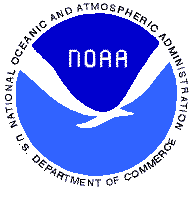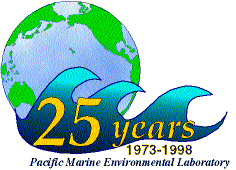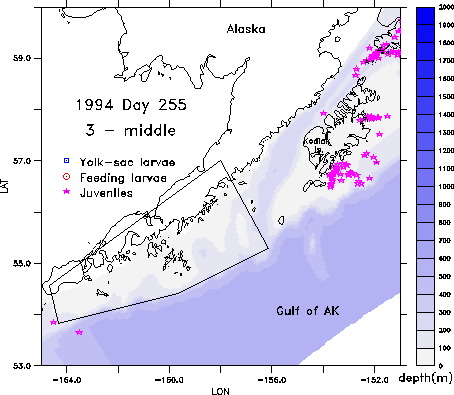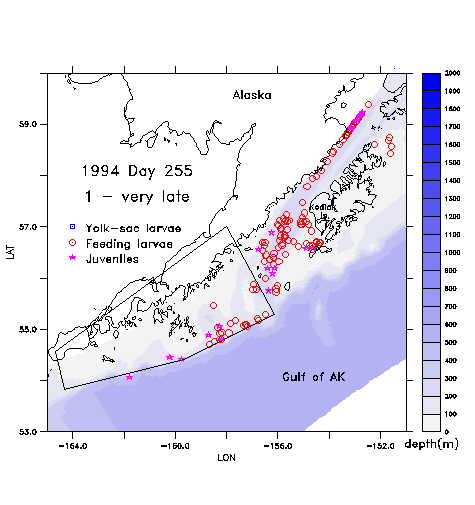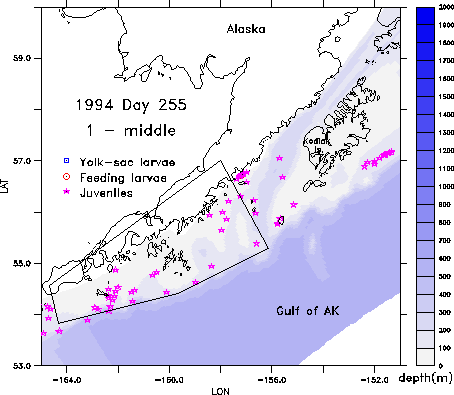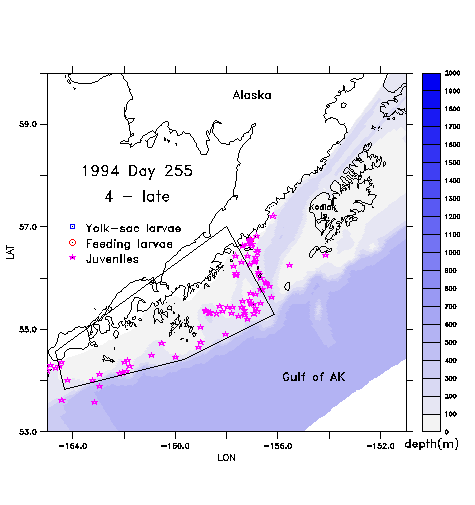|
S. Hinckley, AFSC & A.J. Hermann, PMEL/JISAO
Note: the animations linked to this page are in mpeg format.
If you are
using a PC and encounter any difficulty viewing these movies, we suggest
using the Vmpeg player.
If you prefer the quicktime version of these animations, click
here.
|
Why does a population of walleye pollock spawn at the exit of
Shelikof Strait each spring? One hypothesis is that this population
evolved to optimize physical transport to the juvenile nursery area
near the Shumagin Islands 375 km to the southwest.
Alternatively, factors other than physical transport (e.g. density
of prey) may be significant.
|
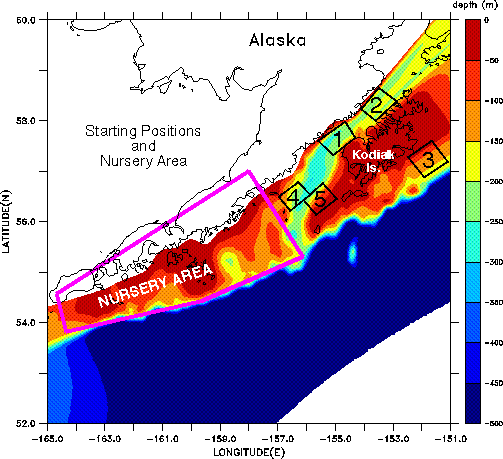
|
We addressed these hypotheses with the
coupled suite of physical and biological models,
driven by winds and runoff appropriate to two
years of good recruitment, 1978 and 1994. Five spawning regions and four
spawning times were considered. Spawning regions 1-5 are indicated on the figure; spawning times are Early (mid-February), Middle (early April), Late (late May), and Very Late (mid-July). "1-Middle"
represents the typical observed spawning time and location.
- Click on map locations 1-5 to see how spawning location
affects early life history for fish spawned in early April 1994
- Click anywhere else on the map to view the modeled circulation during 1994
|
|
Initial locations of spawned populations in the experiment. Transport
of fish to the juvenile nursery area promotes successful recruitment for
a given year.
|
|
Results show that fish spawned to the south of Kodiak Island
(e.g. 3-Middle)
or much earlier or later than the observed spawning
period (e.g. 1-Very
Late) do not reach the Shumagin Island nursery
area as juveniles by early September. However, the region and time of
spawning which did allow successful transport to the nursery
area (e.g. 4-Late)
was much broader than the observed region and
time. Hence factors other than physical transport alone must be
considered to explain the spawning location and
timing of this stock.
- Click on individual images to watch selected regions and times:
|
For more information, please refer to:
Funding support provided by NOAA Fisheries Oceanography Coordinated
Investigations
and Coastal Ocean Programs
|
